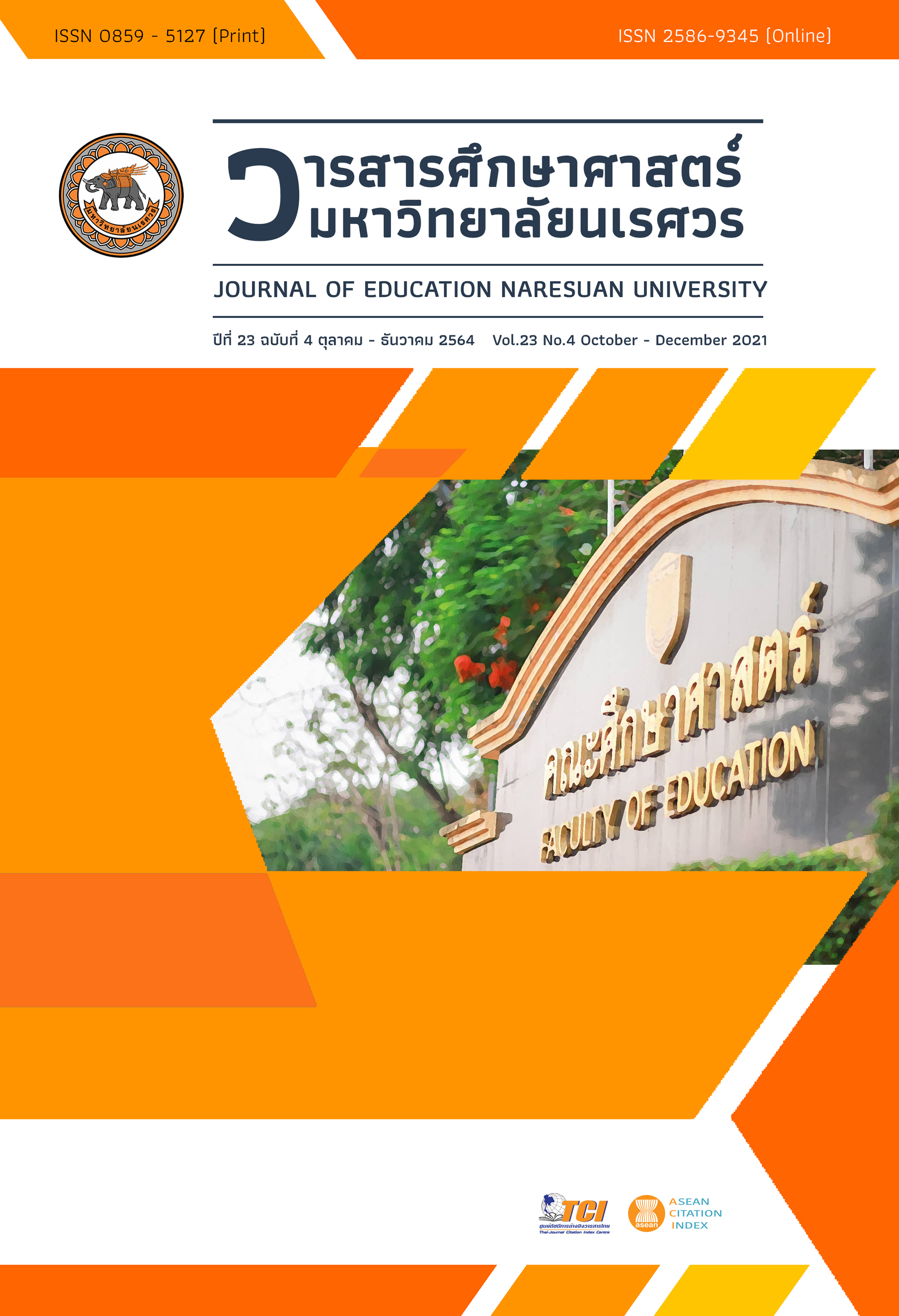A STUDY ON LEARNING ACHIEVEMENT AND ATTITUDE TOWARDS ACTIVITY PACKAGE ON EQUILIBRIUM OF ELEVENTH GRADE STUDENTS USING ACTIVITY PACKAGE WITH ACTIVE LEARNING การศึกษาผลสัมฤทธิ์ทางการเรียนและเจตคติต่อการใช้ชุดกิจกรรมการเรียนรู้ เรื่อง สมดุลเคมี ของนักเรียนชั้นมัธยมศึกษาปีที่ 5 ที่ได้รับการจัดการเรียนรู้โดยใช้ชุดกิจกรรมการเรียนรู้ตามแนวการเรียนรู้เชิงรุก
Main Article Content
Abstract
The purposes of this research were 1) to construct and report the efficiency evaluation of the developed activity package with active learning on Chemical equilibrium on the criterion standard of 80/80, 2) to compare the learning achievement of students before and after their learning through the developed activity package, and 3) to study students’ attitude towards their learning through the developed activity package after learning. The sample was composed of 39 grade 11 students at Bansuan Jananusorn School, Chonburi province. They were identified by the use of cluster random sampling. The research data collection instruments consisted of the developed activity package with active learning, lesson plans, achievement test and attitude test. Data was analyzed by Mean, percentage, Standard Deviation, and t-test. The results of this research indicated that:
1. The developed activity package with active learning on Chemical equilibrium of the students had an efficiency of 84.56/80.77, which was in accordance with the criterion standard of 80/80.
2. The post-test of learning achievement after learning using activity package with active learning was higher than the pre-test at .01 level of significance.
3. Students’ attitude towards learning using the developed activity package with active learning was found at a high level ( = 4.36, SD = 0.67).
Article Details
The owner of the article does not copy or violate any of its copyright. If any copyright infringement occurs or prosecution, in any case, the Editorial Board is not involved in all the rights to the owner of the article to be performed.
References
Bloom, B. S. (1965). Taxonomy of education objective handbook I: Cognitive domain. New York: David Mackey Company.
Bonwell, C. C., & Eison, J. A. (1991). Active learning: Creating excitement in the classroom. Washington, DC: Center for Faculty Classroom Activities for Active Learning.
Boonyang, P., Srisanyong, S., & Singlop, S. (2016). A development of learning active package on ecosystem using Cooperative learning with STAD technique for grade 9 students. Journal of Education Naresuan University, 18(4), 223-237. [in Thai]
Brahmawong, C. (1994). Teaching materials, elementary teaching materials, unit 8-15. Nonthaburi: Office of educational technology, Sukhothai Thammathirat Open University. [in Thai]
Chanchaem, N. (2015). The study of learning achievement in chemistry for grade 11 students using the inquiry cycle (5E) learning method together with the active learning method: A case study at Datdaruni school Chachoengsao province (Master thesis). Chonburi: Burapha University. [in Thai]
Dechsri, P. (2002). Active learning: How do you do it? Journal of Science Mathematics and Technology, 30(116), 53-55. [in Thai]
Kaleram, P. (2016). Development of activity packages entitled “Rate of reactions” by using problem-based learning for matthayomsuksa 5 students (Master thesis). Buriram: Buriram Rajabhat University. [in Thai]
Khumlangmak, C., Chaiprasert, P., & Srisanyong, S. (2015). A study on the effect of biology learning package in endocrine system by using cooperative learning technique STAD in grade 11 students. Journal of Education and Social Development, 11(1), 71-82. [in Thai]
Laohapaibul, P. (1991). Science teaching in secondary school. Chiangmai: Chiangmai University. [in Thai]
Manopichetwattana, S. (2004). Development of integrated teaching and learning management model to focus on participatory learning in the human body enthusiasts (Doctoral dissertation). Bangkok: Srinakharinwirot University. [in Thai]
Ministry of Education. (2008). The Basic Education Core Curriculum B.E. 2551 (A.D. 2008). Bangkok: Department of Curriculum and Instruction Development, Ministry of Education. [in Thai]
Meyer, C., & Jones, T. B. (1993). Promoting active learning: Strategies for the college classroom. San Francisco: Jossey-Bass Publisher.
National institute of Educational Testing Service (Public Organization). (2017). O-NET Results (2015-2017). Retrieved September 5, 2017, from http://www.niets.or.th/ [in Thai]
Saiyot, L., & Saiyot, A. (1995). Education research techniques (4th ed.). Bangkok: Suviriyasarn. [in Thai]
The Thailand Research Fund. (1998). Thailand's science education crisis. Bangkok: The Thailand Research Fund. [in Thai]
Thepworachai, U. (2000). Active learning. Nonthaburi: Mild Publishing. [in Thai]
Wichianrat, C., Chaiprasert, P., & Srisanyong, S. (2016). A study on the effects of active learning method in hydrocarbon derivatives for grade 12 students. Journal of Education Naresuan University, 18(2), 142-151. [in Thai]


